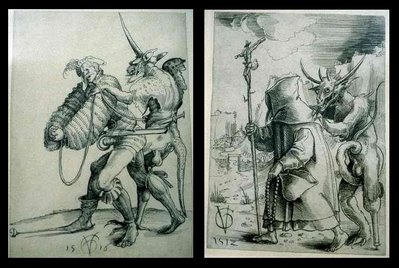

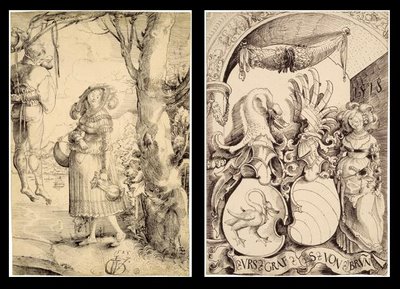
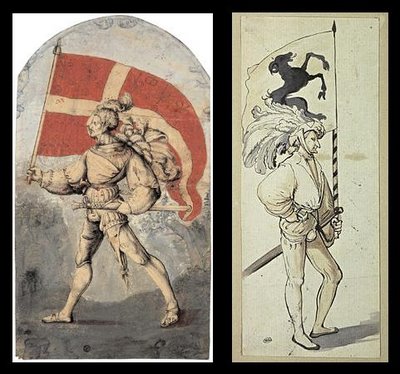

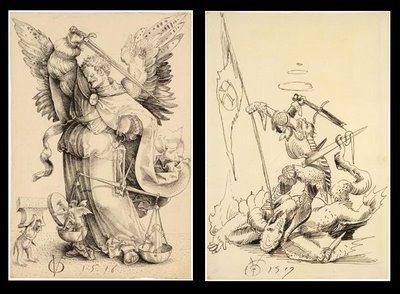
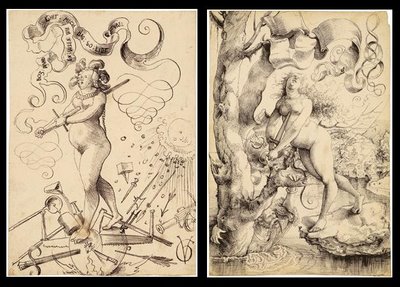
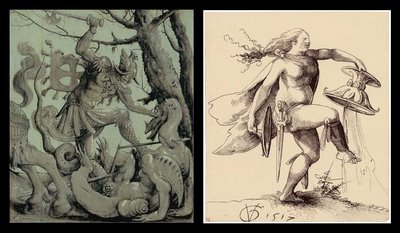
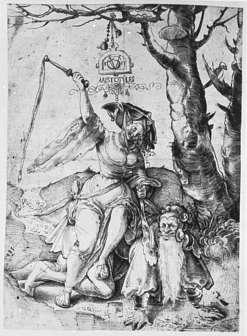

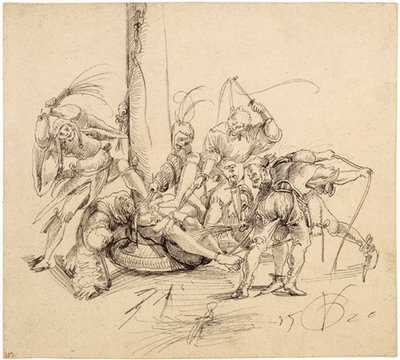
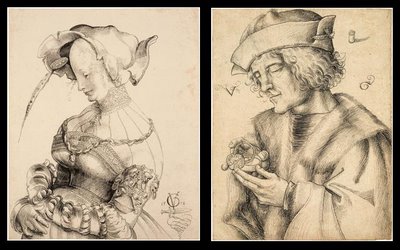

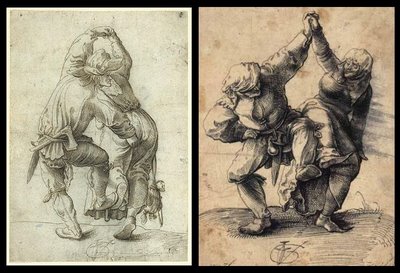
Urs Graf (1485-?1528) was the most important artist of the early renaissance from German Switzerland. He was active in Basel and Zurich from about 1507 until his mysterious disappearance from Basel in 1527.
Graf was a member of the Goldsmiths Guild, a die-cutter, woodblock book illustrator, stain glass designer and painter, engraver, and a mercenary who periodically escaped his artisan life for military adventures in Italy. He produced the world's first etching print in 1513 (not shown) and pioneered the white-line woodblock technique (first image below).
By all accounts Graf's was something of a tumultuous life, frequently involving legal problems from fighting, beating his wife and consorting with prostitutes. He fled Basel for a year in 1518 after an attempted murder.
Through it all Graf produced unique artworks reflecting the violence and social circumstances in which he was immersed. These lively prints and drawings incorporate elements of fantasy or the grotesque and erotic (or at least perverse) but are frequently tinged with a satirist's sense of humour. Conversely, his legacy also includes a sizeable number of purely religious prints and book illustrations. Graf almost always signed his drawings, a practice which helped establish sketch work as an individual artistic discipline rather than a mere transitional process.
Urs Graf was certainly influenced by his more famous contemporary, Albrecht Dürer, and in fact copied at least one of Dürer's prints; but overall Graf pursued his own style which has influenced latterday artists such as surrealist Kurt Seligman (last image below: 'Homage to Urs Graf') and also Otto Dix.
Unfortunately, there are very few large Graf images available online. The great majority of the images above (everything was uploaded at full size so click the images to enlarge them) come from the Kunstmuseum in Basel.
Biographic and/or images can be found here: i, ii, iii, iv, v, vi, vii, viii, ix, x, xi, xii, xiii, xiv, xv, xvi, xvii [Italian], xviii [German], xix [Russian], xx.


These dagger prints were engraved by Graf - they were made from
the early drafts by Hans Holbein for his famous 'Dance of Death' series.
the early drafts by Hans Holbein for his famous 'Dance of Death' series.
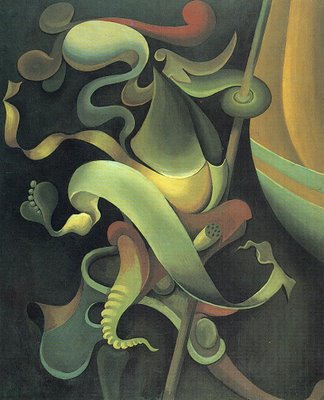
No comments:
Post a Comment